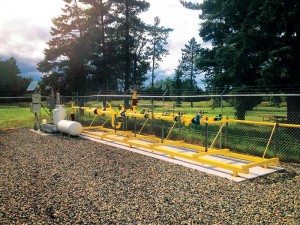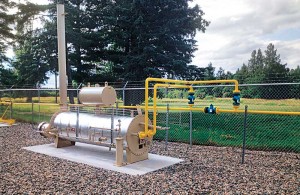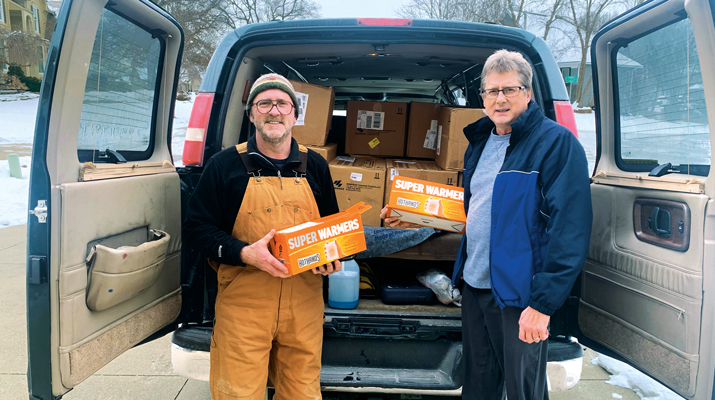Piping with natural gas increases revenue for propane marketers
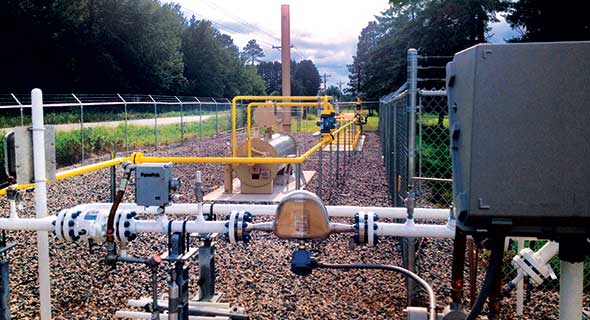
This town border station (for natural gas) is in Blackberry, Minn., just east of Grand Rapids, Minn. Natural gas photos courtesy of Northwest Gas
It’s not necessarily considered going over to the dark side if you also provide natural gas service to your customers. Several operations commonly associated with the propane industry have successfully ventured into the natural gas business.
“We’re a very small company, but it works for us. And if we can do it, anybody can,” says Mike Sheehan at Sheehan’s LP Gas Co. in Bird Island, Minn.
“It’s absolutely the best thing I ever did,” he adds. “We complain a lot about the natural gas companies coming in to steal our customers. Well, we can get into it too: If you can lay pipe, you can do this.”
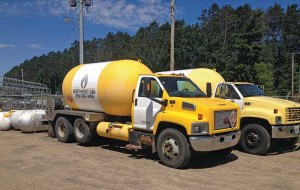
Minnesota propane retailer Northwest Gas also supplies natural gas to 14 small towns. Customer tank-swapping issues motivated the company to diversify.
Sheehan’s propane and natural gas accounts are equal at 900 apiece, with one being selected as the customer’s energy source of choice. The units of measurement differ – LP gas’ gallons versus natural gas’ cubic feet, but “they use about the same amount of energy, whether it’s natural gas or propane,” he says.
An in-house-trained crew of five handles the trenching, piping and connecting tasks, made easier by the use of flexible plastic pipe materials.
“In propane, you have to buy a tank and a truck. With natural gas, you just need the piping and you need to read the meter each month,” Sheehan says. “We as propane retailers have an advantage because you can pick up the propane tank and use it somewhere else, so you have an advantage that no one else has, and we still get to keep the customer.”
Neighborhoods transitioning from rural to semi-rural tend to present the most promising prospects when larger and better-funded natural gas entities are building out their piping networks into previously unconnected locales.
“If you have a big utility that is expanding their mains into your territory, you can see where the closest line is to tap into, and then you can start selling natural gas,” Sheehan says.
Such was the case back in 1969 when Mike’s dad, Fabian “Fabe” Sheehan, was helming the family business. Eager to modernize by getting on the gas grid, Bird Island’s mayor asked Fabe about making a foray into natural gas for the good of the community. Son Mike was concurrently attending the Southern Technical Institute in Georgia, studying the gas industry, and it just so happened that Mike’s class project was to engineer a municipal natural gas distribution system.
“So I designed the Bird Island distribution system for the class,” Mike says. “I got an ‘A’ in the course, and we adopted my plan for our business.”
Making the stretch
In Grand Rapids, Minn., another propane retailer is offering natural gas to some of its customers.
“We have 14 small towns that we now supply natural gas to. We get the calls [to connect], and it’s been good for us,” says Mike Gorham at Northwest Gas, which has a customer base of 25 percent propane and 75 percent natural gas.
“I really get tired of all the tank swapping that goes on in the propane business,” as customers continually switch providers, he says. “Once you get the gas pipe in, you keep them. As long as I can go in there and charge the customer to pay me back for it, it can be profitable.”
Product pricing is a key element when marketing the fuels.
“This year it’s much more competitive,” Gorham says. “You have to save people money or they won’t hook up.”
Prior to laying any pipe, you should have several hundred to a thousand customers lined up and ready to tie in, according to Gorham, citing the benefits of moving into developing communities that are easing onto the natural gas grid.
“The big companies don’t build small systems” branching off their main mains, he says. “There’s a reason that these leftovers are left over” for propane-oriented proprietors to pursue as an added source of revenue.
“The pipes are there, and we’ll build the connecting pipe,” Gorham says, harkening back to when Northwest Gas entered the natural gas arena in 1992. “I decided that I didn’t want to be 100 percent propane by the year 2000. We had 20 to 30 years of pipeline-laying experience, we already knew how to do it, and it wasn’t that big of a stretch.”
The natural gas proposition
Offering natural gas is a highly location-specific proposition dependent on several factors, such as having a suitable natural gas-welcoming population density or a large commercial customer that’s already awaiting your services, according to consultant Casey Whelan, vice president of strategic initiatives at U.S. Energy Services.
“You need to be reasonably close to a pipeline as a source for gas, and you really have to understand the potential customer base,” he says. “Find out the propensity of the customer to convert. The starting price tag is always in excess of a million dollars, and that’s why you need to have the load to offset that capital cost.”
Obtaining official permissions can be a challenge, as well. Minnesota’s utilities commission environment allows for regulatory controls at the local level. Other jurisdictions might be fundamentally geared toward working with giant utilities or otherwise prone to creating hurdles for smaller enterprises.
“Some states make it easy and some make it difficult – not necessarily on purpose. It varies across the board,” says consultant Tom Jaenicke of Warm Thoughts Communications.
“It depends on the regulatory atmosphere in your state; it all depends upon the local regulatory scene,” he adds. “You have a lot of hoops to jump through, but it’s all scalable depending on the size of the system you want to build.”
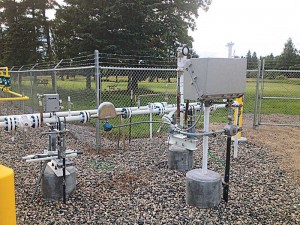
A Coriolis meter installed in the high-pressure piping coming from the transmission line measures incoming gas.
It remains unclear as to exactly how many propane-centric businesses are additionally offering natural gas, but it appears LP gas bona fides remain intact, even if propane retailers have taken that natural gas path.
“It’s not too common, but even if it were they keep it kind of close to the vest,” Jaenicke says. “They don’t want to brag too much about it.”
“We don’t view them as being disloyal,” observes Jeff Petrash, vice president and general counsel at the National Propane Gas Association. “Any number of our members are also in the fuel oil business, and some sell butane.
“Our largest member, AmeriGas, is also in the natural gas business,” he notes, adding, “[But] I’ve heard of no big trend among our membership to do that.”
Referring to baseline natural gas pipeline construction cost of about $1 million per mile, Petrash says, “It’s a tough one to crack, in that a natural gas network is pretty darned expensive. In places with tough geography, it’s even more expensive.”
The fight for fairness
Natural gas has been a hot topic among leaders at the national and state levels of the propane industry, but for reasons that they believe create an uneven playing field for propane marketers. Natural gas utilities are using state legislatures and public utility commissions to help their businesses expand into propane country unfairly, the propane industry says. According to the National Propane Gas Association (NPGA), there were about 40 proposals across the country last year to use taxpayer money or existing ratepayers to subsidize the cost of this expansion. NPGA held an educational session on the topic at this year’s Propane Expo in Nashville, Tenn.








